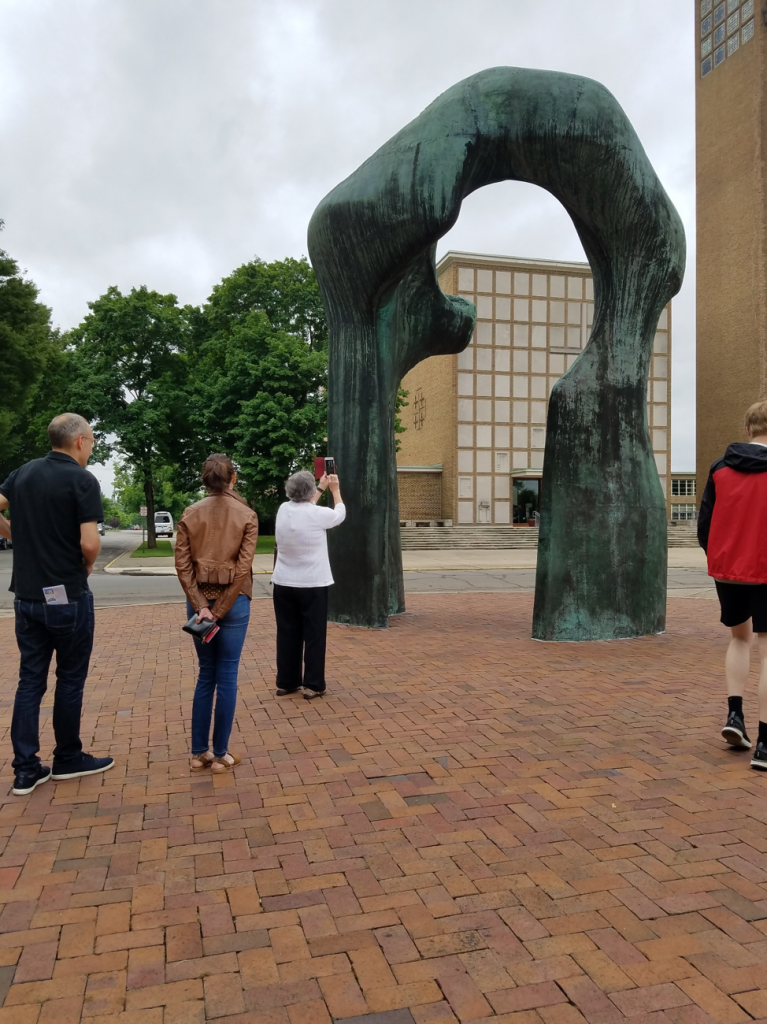
by Travis Cooper
On one humid, overcast summer day, an unpredictable ethnographic experience got me thinking about urban myth-making, sanctioned versus unsanctioned narratives, and contested public space.
The incident occurred as follows.
Among a group of architectural tourists on Columbus’s Avenue of the Architects, I observed as our tour guide — who I’ll call Eric — detailed I.M. Pei’s design methods for the plaza. Eric was a walking encyclopedia of architectural data, dropping design concepts such as subtractive architecture and coffering. He pointed out how the various architects who contributed to the environs aimed for a loose structural consonance. “Look how that walkway lines up, visually, with the clock tower,” he encouraged. He signaled toward the parallels between the texture of the underside of the library’s flat roof and the honeycomb pattern on nearby plaza benches.
We walked slowly toward the plaza’s center, trailing behind Eric as he approached the sculpture backwards, gesturing this way and that, deeply engaged in tour guide rhetoric. As we neared the foot of avant-garde sculptor Henry Moore’s Large Arch at the center of the plaza, an unexpected interruption resulted in a moment of awkward pause. A middle-aged man to our left, slightly unkempt and with cigarette in hand, interjected into Eric’s official soliloquy. “It’s Godzilla’s leg-bone, man!” he exclaimed, stepping forward from where he had been leaning against the red-brown brick of Pei’s library façade. Face bright with the attention he drew, from a distance this temporarily emboldened, unsanctioned guide traced the contours of the bronzed form with an outstretched finger. Continue reading “Moore’s Large Arch is Godzilla’s Leg-Bone”
